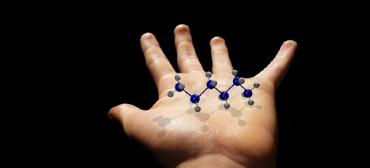Type 1 Diabetes in Children
The most common type of diabetes in children is type 1 diabetes. In fact, according to the American Diabetes Association, type 1 diabetes is one of the most common chronic diseases in children. Type 1 diabetes accounts for 5 percent of all diagnosed cases of diabetes in the U.S.
What is type 1 diabetes?
Type 1 diabetes may also be known by a variety of other names, including:
-
Insulin-dependent diabetes mellitus (IDDM)
-
Juvenile diabetes
-
Brittle diabetes
-
Sugar diabetes
There are two forms of type 1 diabetes:
-
Idiopathic type 1. This refers to rare forms of the disease with no known cause.
-
Immune-mediated diabetes. An autoimmune disorder in which the body's immune system destroys, or attempts to destroy, the cells in the pancreas that produce insulin.
Immune-mediated diabetes is the most common form of type 1 diabetes and is generally referred to as type 1 diabetes.
What causes type 1 diabetes?
The cause of type 1 diabetes is unknown. However, it is believed that people inherit a tendency to develop diabetes, and that some outside trigger may be involved. Type 1 diabetes is the result of the body's failure to produce insulin, the hormone that allows glucose to enter the cells of the body to provide fuel. This is the result of an autoimmune process in which the body's immune system attacks and destroys the insulin producing cells of the pancreas.
When glucose cannot enter the cells, it builds up in the blood, depriving the cells of nutrition. People with type 1 diabetes must take daily insulin injections and regularly monitor their blood sugar levels.
What are the symptoms of type 1 diabetes?
Type 1 diabetes often appears suddenly. In children, type 1 diabetes symptoms may resemble flu symptoms. The following are the most common symptoms for type 1 diabetes. However, each child may experience symptoms differently. According to the American Academy of Pediatrics, common symptoms may include:
-
High levels of sugar in the blood when tested
-
High levels of sugar in the urine when tested
-
Unusual thirst
-
Dehydration
-
Frequent urination; a baby may need more frequent diaper changes; a previously toilet-trained child may start wetting his or her pants.
-
Extreme hunger but loss of weight; loss of appetite may be seen in younger children.
-
Blurred vision
-
Nausea and vomiting
-
Abdominal pain
-
Extreme weakness and fatigue
-
Irritability and mood changes
-
Serious diaper rash that does not respond to treatment
The symptoms of type 1 diabetes may resemble other problems or medical conditions. Always consult your child's doctor for a diagnosis.
What can be expected with type 1 diabetes?
Type 1 diabetes may cause the following:
-
Hypoglycemia (low blood sugar, sometimes called an insulin reaction). This occurs when blood sugar drops too low.
-
Hyperglycemia (high blood sugar). This occurs when blood sugar is too high, and can be a sign that diabetes is not well-controlled.
-
Ketoacidosis (diabetic coma). A loss of consciousness due to untreated or undertreated diabetes.
Complications that may result from type 1 diabetes include:
-
Heart disease
-
Kidney disease
-
Eye problems
-
Neuropathy (nerve problems)
-
Foot problems
Treatment for type 1 diabetes
Children with type 1 diabetes must have daily injections of insulin to keep the blood sugar level within normal ranges. Specific treatment for type 1 diabetes will be determined by your child's physician based on:
-
Your child's age, overall health, and medical history
-
Extent of the disease
-
Your child's tolerance for specific medications, procedures, or therapies
-
Expectations for the course of the disease
-
Your opinion or preference
Treatment may include:
-
Appropriate foods (to manage blood sugar level)
-
Exercise (to lower and help the body use blood sugar)
-
Regular blood testing (to check blood-sugar levels), as directed by your child's doctor
-
Regular urine testing (to check ketone levels), as directed by your child's doctor
Helping your child cope with type 1 diabetes
Depending on your child's age, a type 1 diabetes diagnosis can be devastating. The younger child may not quite understand all the life changes that may occur because of the diagnosis, such as glucose monitoring and insulin injections. After being diagnosed with type 1 diabetes, children may feel:
-
As if they are being punished
-
Guilty
-
Fearful of death
-
Hostility toward the parent
Although a child who is diagnosed with type 1 diabetes requires supervised medical care, a parent should avoid being overprotective. Through parental encouragement, self-care of the diabetes by the child, starting at the appropriate age, will foster improved self-esteem and independence.
Related Questions
Chicken pox
- 3692 Days ago
- Child Health
Infant Self Stimulation
- 3729 Days ago
- Growth & Development - Child Health
Pediatric Cardiac oparation
- 3740 Days ago
- Growth & Development - Child Health
Speech therapy
- 3769 Days ago
- Child Health
My weight is 40 kg
- 4113 Days ago
- Child Health
Precaution during new teeth arising
- 4116 Days ago
- Child Health





















